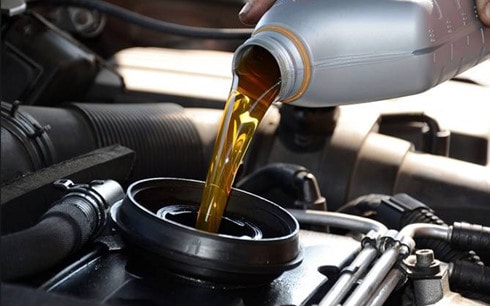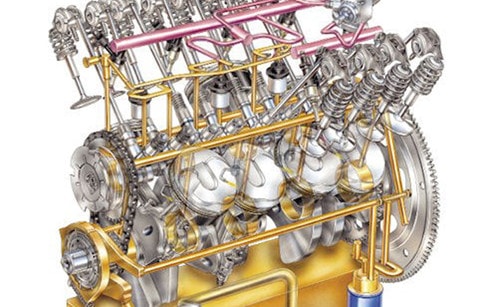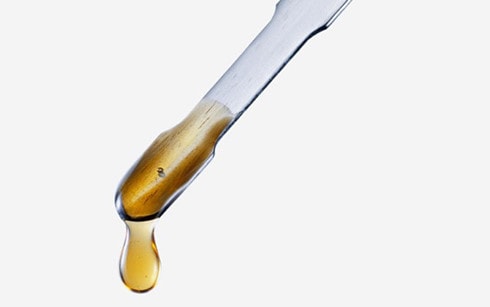Things to remember when changing car engine oil
If the engine is likened to the 'heart' of every car, then engine oil is the 'blood' that helps the car run smoothly.
The most common question asked by new car owners is how often should they change their engine oil? The answers to these questions vary. This is because there are many factors that affect the quality of the oil. Therefore, there is no one-size-fits-all answer.
 |
| Engine oil is an indispensable component contributing to the operation of the car. |
Some say 3,000 km, others 5,000 km or 10,000 km. All of these answers are correct, to a certain extent. The oil change schedule usually depends on how long or short the mileage is, how hot or cold the outside temperature is, and how heavy the load is. Also, driving long distances does not usually damage the oil as quickly as maintaining the vehicle at high speeds.
Some truck drivers are used to changing their oil every 3,000 miles. Owners manuals recommend 10,000 miles or more. Some manufacturers have software that displays oil change times as a reminder. When the time comes, a light comes on.
The oil change program is calculated based on the operation of the engine and transmission. Engineers give the new oil a value that is gradually reduced each time the engine is running. When this value reaches zero, the warning system will be activated. Some companies also calculate the "cold engine" time. The reason is that low temperatures increase the possibility of moisture, acids, and unburned fuel in the oil. This significantly reduces the service life.
What does engine oil do?
Engine oil has different compositions depending on the vehicle. However, it should be noted that engine oil is different from transmission oil and brake fluid.
The function of engine oil is to lubricate, clean, and cool the internal parts of the engine... Because when the car operates without lubricating oil, friction will cause the parts to wear out.
 |
| Components lubricated by engine oil (yellow line) |
Engine oil will be contained in the oil pan and pumped to the engine to lubricate most of the engine components such as: camshaft, upper part of valve, piston, connecting rod, crankshaft... Only the combustion chamber area including spark plugs and fuel injectors cannot be penetrated by engine oil.
When the engine is running, the combustion process of the air-fuel mixture will create a lot of soot, dirt... the additives in the engine oil will clean the surface of the parts and remain in the oil. After being used, the engine oil will fall back to the oil pan to continue to be reused until the oil quality decreases and needs to be replaced.
When to change oil?
Experts say that if driving under harsh weather conditions and heavy loads, then every 3,000 km of oil change is appropriate. But under normal conditions, that value can increase to 10,000 km.
Normally, a car should change its oil every 3,000 to 5,000 km or every 3 months. However, some luxury car models use high-quality engine oil, so the operating time is longer and the distance traveled is also longer. For example, Mercedes-Benz models can go 8,000 km each time they change the engine oil before having to change it again.
 |
| Use the dipstick that comes with every vehicle to assess the quality of the oil and whether it needs to be changed. |
In addition to the above calculation, you can rely on the oil dipstick in the engine that any car is equipped with. Normally, the oil dipstick has a yellow handle, located on the engine, when opening the hood of the car, it will be easy to find.
On all dipsticks there are two notches max and min, the oil must be within this level to ensure the engine operates well. If it is outside, lower than min means the engine is lacking lubricating oil, higher than max means there is excess oil, both cases are not good for the vehicle's operation. According to the experience of long-time car users, the best way to check is when the engine is cold, the oil must not be lower than min and when the engine is hot the oil must not be higher than max.
Looking at the color of the oil on the dipstick, you can know whether to change the oil or not. Accordingly, if the color of the oil is black, it is time to change the oil, while if the oil on the dipstick is orange, the oil is still good and should not be changed.
What type of oil should I change to?
Depending on the vehicle model and the characteristics of the engine equipped on the vehicle, the oil used for each type of vehicle is also different. It is best to consult the manufacturer, or change the oil at authorized dealers of the vehicle brand you are using, or at reputable garages, ensuring that the correct type of oil is replaced for the vehicle engine.
According to VOV
| RELATED NEWS |
|---|


